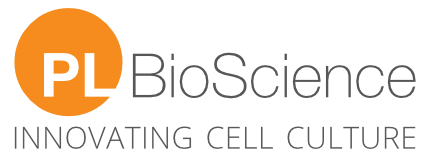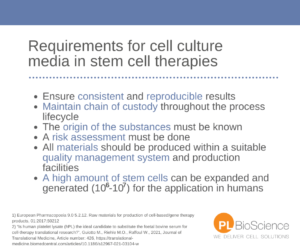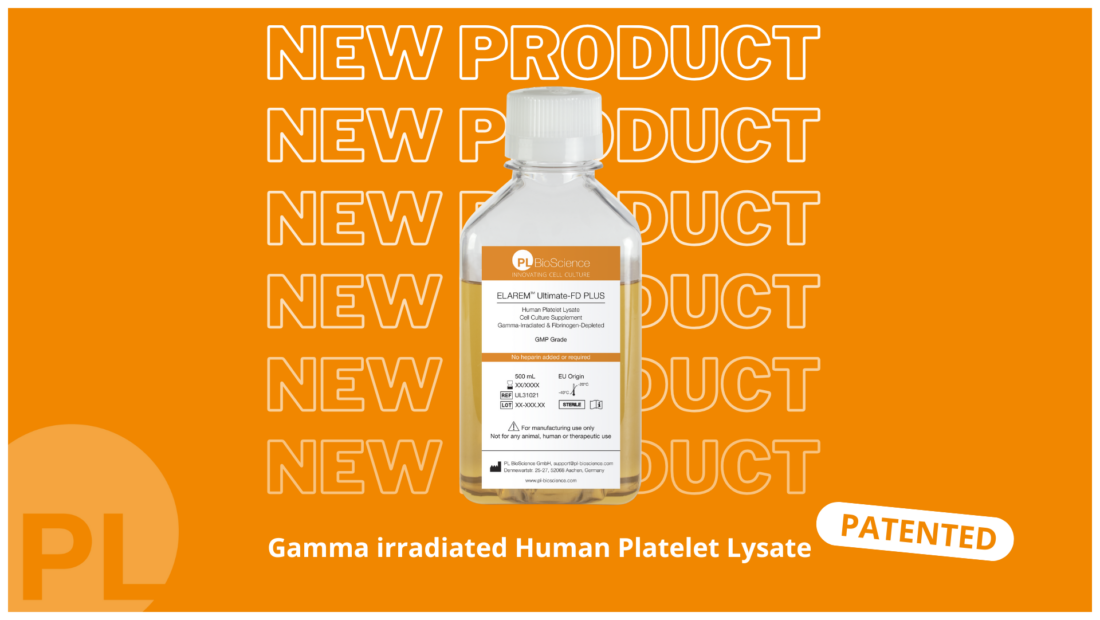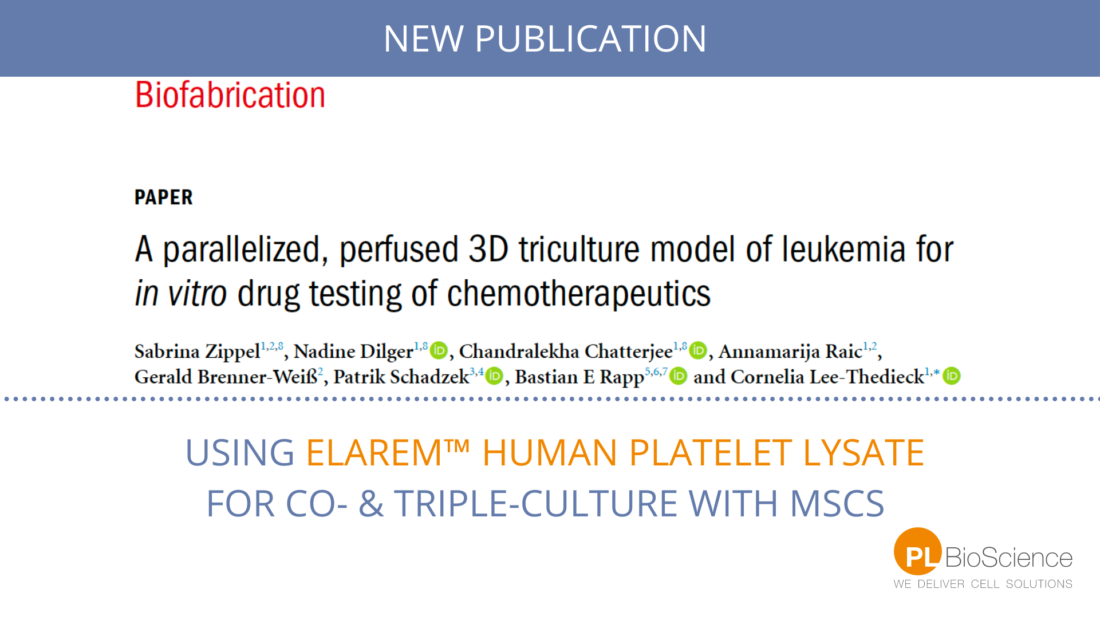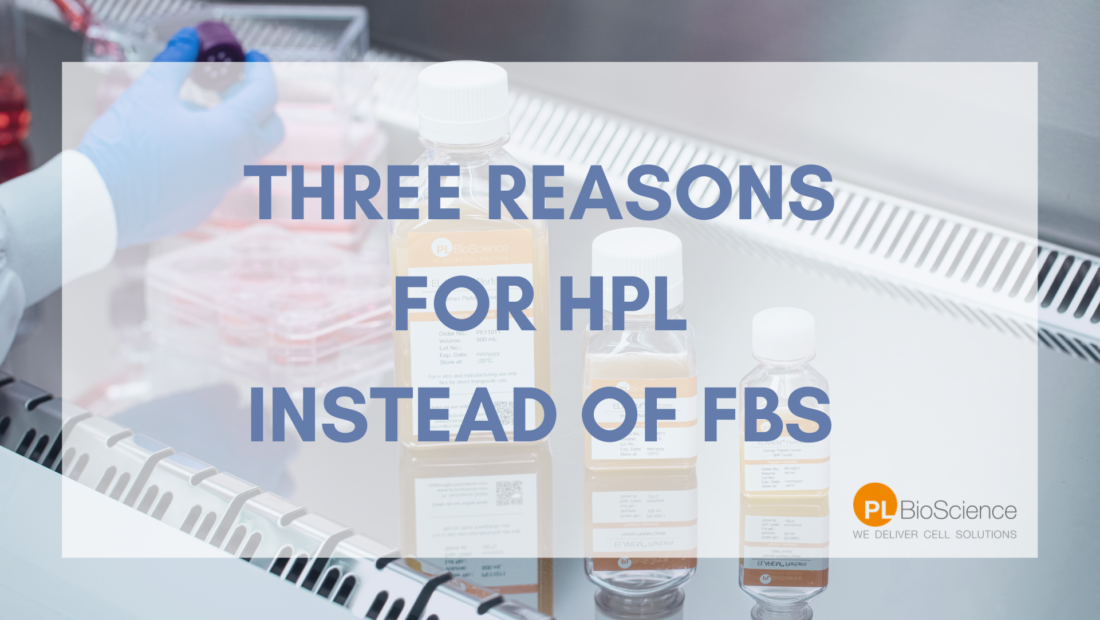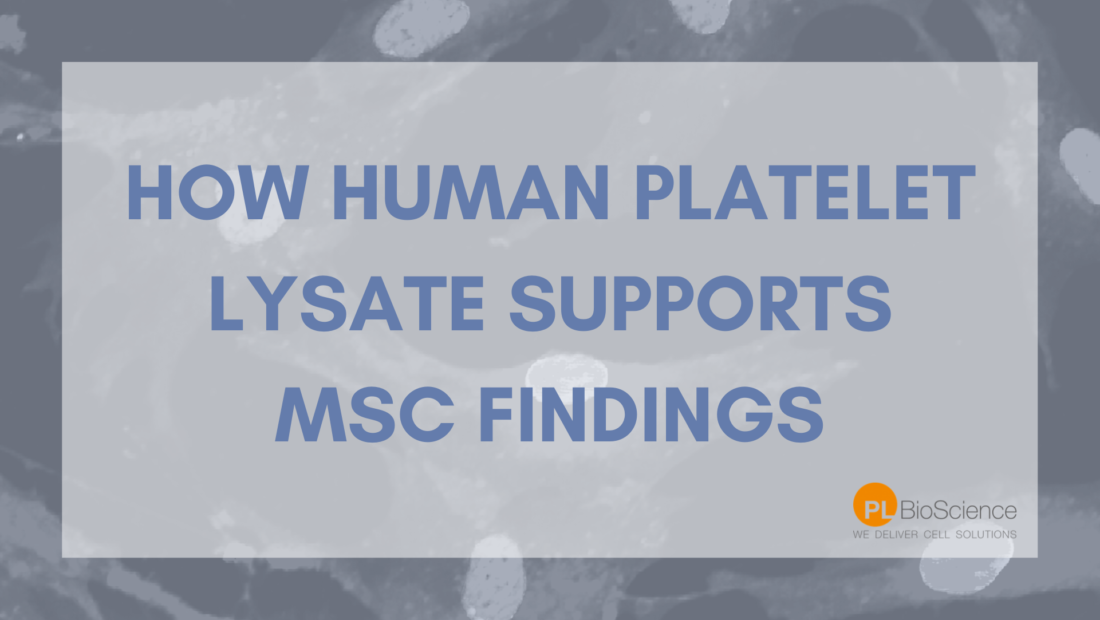
How HPL supports MSC findings
Why are Mesenchymal Stem Cells so interesting for industry and clinical research?
The properties of Mesenchymal Stem Cells (MSCs) make them capable to be used for a broad application in research fields and the development of cell therapies. One topic is getting more important and looked after in reviews and publications: The cultivation of a huge amount of cells in a homogenous matter under clinical grade (GMP) conditions is essential in order to meet specific criteria for therapeutic use. (1,6)
Thus, the optimal cell culture medium is crucial when working with human Mesenchymal Stem Cells / Stromal Cells (MSCs) – not only for the development of regenerative therapies. (8)
Why are MSCs so interesting?
MSCs have broad anti-inflammatory and immune-modulatory properties. This plays an important role in the regeneration of tissues.
The problems with our human tissues is that if they got damaged by trauma or disease, the capacity of cell regeneration decreases with age (tissue age).
“The immune system plays a central role in tissue recovery after injury. MSCs interact extensively with the immune system and promote an anti-inflammatory and pro-regenerative environment that favors injury resolution and, ultimately, tissue repair.“ (5)But MSCs remain not fully understood until today. One of the main challenges is to further investigate intercellular and intracellular signaling (e.g. with MSC derived EVs) and their ability to repair endogenous tissued after re-implantation. (1)
Advantages of cell cultures using MSCs
Besides the great advantages of MSCs for immunology purposes, there are also a lot of others for researchers and the industry:
- Ex vivo culture protocols for MSC expansion are already in place for clinical applications in regenerative medicine and immunomodulatory therapy
- Easy Access – allogenic or autologous (cell lines or primary cells)
- Can be generated from different sources (Umbilical cord (blood), Placenta, Adipose Tissue, Bone Marrow, Wharton’s Jelly)
- Very well-known and investigated cells
- Can be used for EV extraction
MSCs: the well-known stem cells are still surrounded by a lot of secrets
Mesenchymal Stem Cells or also Mesenchymal Stromal Cells (MSCs) are a cell population of multipotential progenitor cells. MSCs have first been isolated and described in the late 1980s (over 30 years ago) and are one of the most investigated cells in research. (1) This can be demonstrated by the number of publications published until 2021 which is about 85,000 (3). And the interest is not getting less but increasing every year.
“Worldwide, for the years 2011−2018, there were 1,043 MSC trials planned with a targeted enrollment of 47,548 patients” (2).What challenges do researchers and the industry face with MSCs?
- Cultivating a huge amount of cells (106– 107) (10)
- Cultivating homogenous MSCs under clinical grade (GMP) conditions
- Meeting specific criteria for therapeutic use
Besides the culture conditions, the re-implantation (such as dosing) and in vivo behavior of MSCs (decreasing cell numbers after transplantation) remains a challenge to the scientific community. (1, 6)
“Standardization of mesenchymal stromal cells (MSCs) remains a major obstacle in regenerative medicine. Starting material and culture expansion affect cell preparations and render comparison between studies difficult.” (8)How Human Platelet Lysate supports MSC findings
Human Platelet Lysate contains abundant growth factors and cytokines derived from human platelets. These nutrients effectively support cell proliferation which leads to accelerated proliferation times. Human Platelet Lysate is derived from human platelet units sourced from approved blood centers. Next of being free from ethical concerns, HPL allows for traceability and does not pose a risk of animal-derived pathogen and prion transmission. Lot-to-lot consistency eliminates FBS-related batch testing and ensures reproducible results. This enables a standardized culture of MSCs, the basis of reliable and relevant research.
We developed Human Platelet Lysate with a background in MSC research
With a background in MSC research, we developed an entire portfolio of Human Platelet Lysates (HPL) named ELAREM™. As xeno-free cell culture supplements, our ELAREM™ Human Platelet Lysates enable the standardised culture of MSCs in safe conditions. A step towards xeno-free culture of MSCs.
Due to the high growth factor content, a medium supplementation of 2.5 %-5 % (v/v) ELAREM™ Perform HPL achieves much better MSC growth results than 10 % (v/v) Fetal Bovine Serum. A medium supplementation of 10% ELAREM™ Prime achieves slightly higher but comparable MSC growth results as FBS – for a xeno-free replacement of the questionable calf serum.
Advantages of ELAREMTM Human Platelet Lysate for MSC culturing:
- Improved proliferation: Human Platelet Lysate contains abundant growth factors and cytokines derived from human platelets. These nutrients effectively support cell proliferation. This leads to accelerated proliferation times.
- Maintaining of differential potential
- Safe to use: Human Platelet Lysate is derived from human platelet units sourced from approved blood centres. At PL BioScience, we only work together with certified blood donation centers. Next of being free from ethical concerns, HPL allows for traceability and does not pose a risk of animal-derived pathogen and prion transmission.
- Lot-to-lot consistency: Due to our standardized production process and constant batch records we minimize the batch-to batch variability and ensure a constant quality. This ensures reproducible results and a standardized culture of MSCs, the basis of reliable and relevant research.
- Quality: Quality is important to our business. We value our customers, and therefore strive to provide our customers with products and services, which meet and even exceed their expectations. To ensure a high quality within the whole production process, we select and monitor our suppliers against set criteria.
Clinical trials with ELAREM™ Human Platelet Lysate
In total, our products are involved in 5 clinical trials about RDS Treatment, Diabetes and Fat Cell Treatment. Two of them are already published with positive results. Three of them are still ongoing as for example at the Karolinska Institute in Sweden.
Sources:
- Pittenger et al. “Mesenchymal stem cell perspective: cell biology to clinical progress”, 2019, npj Regenerative Medicine, Publishes in partnership with the Australian Regenerative Medicine Institute, https://doi.org/10.1038/s41536-019-0083-6
- clinicaltrials.gov and https://celltrials.org/public-cells-data/msc-trials-2011-2018/65).
- https://platform.pubgrade.com/research-analytics
- Lechanteur et al. “MSC Manufacturing for Academic Clinical Trials: From a Clinical-Grade to a Full GMP-Compliant Process”, Cells 2021, Division of Hematology, Department of Medicine, CHU of Liège, University of Liège, Cells 2021, 10, 1320. https://doi.org/10.3390/cells10061320
- Calcat-i-Cevera et al. “When Origin Matters: Properties of Mesenchymal Stromal Cells From Different Sources for Clinical Translation in Kidney Disease”, Front. Med. 2021, https://www.frontiersin.org/articles/10.3389/fmed.2021.728496/full
- Jakob et al. 2020
- https://pubmed.ncbi.nlm.nih.gov/28017599/
- Frobel et al. 2014
- Nikolitis et al 2021
- European Pharmacopoeia 9.0 5.2.12. Raw materials for production of cell-based/gene therapy products, 01:2017:50212
